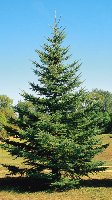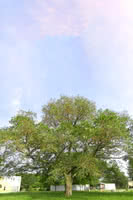Mon-Fri 9am - 5pm Mountain time
Black Hills Spruce vs Discovery Japanese Elm
Picea glauca var. densata
Ulmus davidiana var. japonica Discovery
NOT AVAILABLE THIS SEASON - MIGHT RETURN
Black Hills Spruce is a subspecies of White Spruce native to the Black Hills of South Dakota. It has a strongly conical form, slower growth rate and denser foliage than typical white spruce, making it preferable as a specimen tree for smaller suburban lawns. It also responds well to pruning, and can be used as a hedge or even bonsai.
Discovery Japanese Elm is great for anyone who doesn't have a lot of time to maintain their trees as it doesn't drop many seeds. It has beautiful dark green foliage and is resistant to Dutch Elm Disease. This elm is similar in shape to the American Elm but is roughly 30% smaller. Instead of having an irregular and broad-shaped crown as other Japanese Elms do, the Discovery Japenses Elm has symmetrical branching, an upright growth form, and develops a classic vase-like crown.
Black Hills Spruce Quick Facts
Discovery Japanese Elm Quick Facts
In row spacing: 3 - 4 m (10 - 12 ft)

